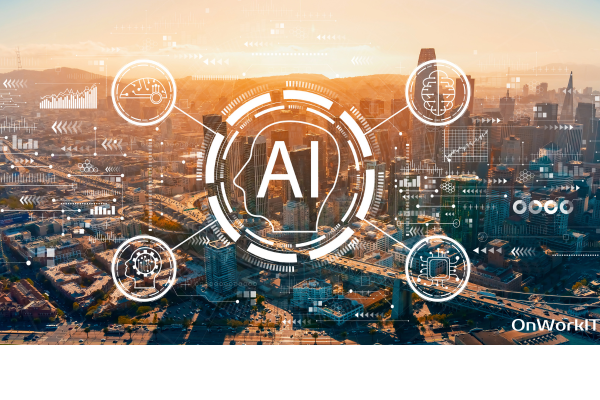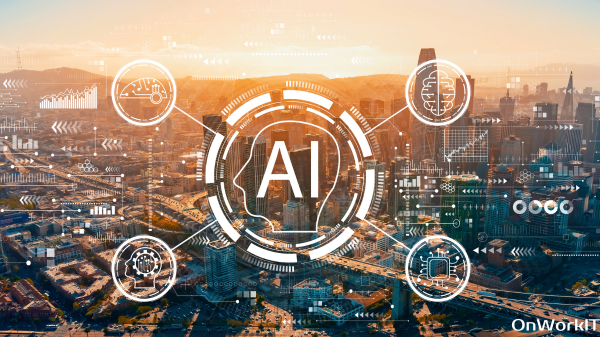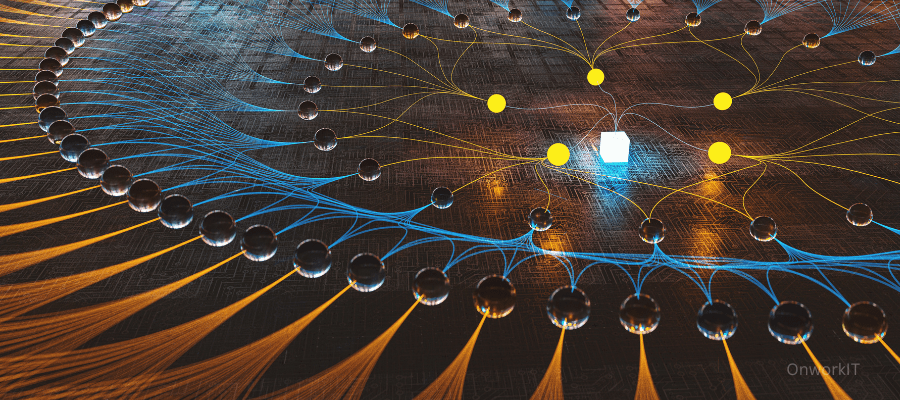Introduction to Quantum AI and Material Sciences
Quantum AI Two of the most innovative areas of study currently with the potential to change a large spectrum of sectors are quantum artificial intelligence and material sciences. Drawing on ideas from quantum physics, the quickly forming science of quantum computing processes information in basically unique ways. Quantum computing use quantum bits, or qubits, as the lowest unit of data, unlike normal computing which uses bits. The qualities of superposition and entanglement allow these qubits to exist in several states at once, thereby permitting exponential improvements in computer capability.
AI and Modern Technologies:
Still another key trait of current technological growth is artificial intelligence. It depends on creating systems and algorithms able to handle tasks usually demanding human experience. Among these tasks include learning, thinking, fixing problems, and natural language understanding. Artificial intelligence (AI) mixed with quantum processing, often known as “Quantum AI,” gives the ability to handle tough situations beyond the understanding of current conventional computers.
Material Science:

Understanding and changing the features of materials is the subject of the extensive study of material sciences, hence allowing new goods and improvement of old ones. Examined in this field include metals, plastics, ceramics, and alloys. Combining quantum artificial intelligence with material sciences offers a powerful tool for the discovery of new materials. augmenting the already existing ones and giving fresh assumptions regarding their behavior in certain situations.
Including Quantum AI into the field of Material Science allows researchers to reproduce and model materials at the quantum level. Industries like aircraft and pharmaceuticals where material properties are important for success and innovation count on this knowledge. These technologies viewed collectively represent a radical move rather than a small one. It may totally change how materials are explored, produced, and employed in helpful uses.
The Role of Quantum Computing in Material Sciences
The unique potential of quantum computing to perfectly copy molecule structures and perform complicated computations is causing material sciences to face a revolution. Unlike ordinary computers which run binary bits, quantum computers employ quantum bits, or qubits. These qubits can be in numerous states simultaneously due to quantum superposition and interaction. This basic difference allows quantum computers to handle tough jobs 10 times quicker than their conventional versions and process large amounts of data.
Correct replication and modeling of molecular structures is one of the most important benefits of quantum computing in the material sciences. Usually unable to handle the complex interactions present in big and sophisticated molecular systems, standard computing methods Conversely, by leveraging their specific processing power, quantum computers may successfully face these challenges. This skill allows researchers to examine new materials and their atomic-level properties, hence aiding the discovery of revolutionary materials with extraordinary performance qualities.
Modern studies and novel ideas in this topic show the changing possibilities of quantum computing. For instance, quantum algorithms are under built to predict chemical and material interactions under defined situations. helping to make more socially friendly, effective materials. With the chance to greatly expand areas such pharmaceutical development and green energy, researchers are also leveraging quantum processing to improve chemical processes.
Real-World Applications
Practical uses of quantum computing for material sciences and related breakthroughs are starting to show. For instance, Google and IBM are building quantum computers intended to handle issues in material science. One important success in the field is Google’s quantum computer’s effective modeling of a chemical process adding hydrogen molecules, hence improving the science. More complex models and faster synthesis of creative materials are made possible by these changes.
As the technology evolves, the introduction of quantum computing to the material sciences is likely to provide new paths and lead major changes. By allowing accurate molecular modeling and complex math. By making it a necessary instrument for scientists and researchers, the study of quantum computing has the ability to change the subject of material sciences.
Artificial Intelligence: Enhancing Material Discovery and Development

By greatly speeding the search for and synthesis of new materials, artificial intelligence (AI) is changing the world of material sciences. Historically, material discovery has based mainly on trial and error and asks for a lot of time and energy. But artificial intelligence (AI) is changing this with its power to examine huge datasets, predict material characteristics, and speed research.
One of the most important effects of artificial intelligence on material finding is its power to organize and analyze large amounts of data. Modern methods allow you sort through huge collections of experimental results and material properties. finding connections and patterns usually undetectable to human eye. This tool allows researchers fast find materials that show potential for additional study, hence saving the time necessary for the early phases of discovery.
Predictive Modeling
One such instance where artificial intelligence shines is predictive modeling. Using already obtained data, machine learning systems may be taught to predict the features of fresh, unconfirmed materials. Artificial intelligence (AI) can mimic numerous compositions and surroundings to predict material behavior in many diverse situations. This helps researchers to find the greatest options for different reasons. Companies trying to make goods with particular qualities like greater strength, conductivity, or durability will find this predictive capacity useful.
They are not merely imaginary since there are several real situations showing the possibility of artificial intelligence-driven material findings. New metals more corrosion resistance, polymers with higher temperature stability, and even better-performance superconductors have been created due to artificial intelligence. Usually the result of AI’s ability to study a larger range of choices than conventional ways, these findings ensure the discovery and development speed of most prospective materials.
Optimization of Material Performance

Moreover, one of the key aims of machine learning methods is bettering material performance. By repeatedly changing their models and predictions depending on fresh data and testing outcomes, these algorithms can slowly boost material properties. This iterative process assures that the AI-developed materials stay innovative while nonetheless being properly optimized for their meant goals.
In essence, artificial intelligence (AI) is a revolutionary force in the material sciences pushing rapid progress and producing new possibilities for the development of future materials, not merely a tool. The adoption of artificial intelligence (AI) technologies in material research and development will surely lead to even more innovative finds that will revolutionize sectors and drive technology as they evolve.
Synergy of Quantum AI and Material Sciences
The confluence of quantum artificial intelligence and material sciences could revolutionize our knowledge and ability to create new materials. Scientists may obtain formerly unimaginable degrees of efficiency and accuracy in material simulations by applying artificial intelligence and quantum computers. Conventional ways of material modeling could take a lot of work and computer resources. But quantum artificial intelligence can greatly lessen these needs by solving difficult equations quickly and more accurately.
By allowing quick evaluation of vast datasets, quantum artificial intelligence speeds the identification of new materials with wanted features. Machine learning methods may predict atomic-level material behavior when linked with quantum computing, hence allowing the discovery of molecules not otherwise possible. This speeds up the cycle of finding and helps researchers study a bigger spectrum of probable materials in a fraction of the time necessary before.
Research

One may notice this collaboration in the relationship between IBM and the University of Basel. Using quantum artificial intelligence to recreate chemical activity caused by their transdisciplinary study produced new energy storage materials. Another example is Google’s Quantum AI center, which studies the possibilities of quantum processing in material sciences in partnership with various institutions. Their studies have given positive breakthroughs in the production of high-temperature superconductors, consequently altering the ways of energy conveyance.
These combined attempts demonstrate the transformative possibilities in the material sciences by mixing artificial intelligence with quantum computing. Combining the skills of two careers helps researchers to build materials with unique features that may change various areas, including health and electronics, including those of two professions. The merger of quantum artificial intelligence and material sciences not only increases our basic knowledge of and ability to handle materials but also provides fresh ways for creation, thereby pushing progress in heretofore unthinkable fields.
Advances in quantum artificial intelligence and material sciences could totally change computing, energy, aircraft, and healthcare among other industries. These technologies are not merely tweaks; they have the power to totally rethink the basic ideas pushing these sectors.
Electronics
Electronics could gain greatly from new materials created with quantum artificial intelligence. Faster, more efficient semiconductors—the backbone of current electronics—may be made from these molecules. Quantum artificial intelligence might aid in the study and manufacture of these semiconductors consequently making devices with better performance and decreased power usage. Moreover, the ability of quantum computation to handle hard tasks in electronics design could result in heretofore inconceivable breakthroughs in consumer electronics, telecommunications, and computers.
Energy
Material studies and quantum artificial intelligence have similar effect on the energy economy. Improved batteries—which are important for the energy storage in green energy systems—may be made practical by innovative materials. Better battery technology may enhance the lifetime and efficiency of energy storage, hence improving the feasibility and dependability of renewable energy sources including solar and wind power. By helping to build materials for better photovoltaic cells, quantum artificial intelligence can also add to a cleaner energy future and boost solar panel efficiency.
Aerospace
Moreover expected to bring about noteworthy advances in the airplane business are these technologies. Stronger and lighter materials help to minimize the carbon footprint of air travel, hence allowing more fuel-efficient airplanes. By means of creation and testing, quantum artificial intelligence may aid in assuring that these materials meet high performance and safety standards. Consequently, military as well as civilian airplanes should see improved performance and safety as well as cost reductions.
Healthcare

Innovative medical tools and treatment methods created in the healthcare business can be driven by innovative materials. The production of biocompatible materials utilized in implants and prostheses can be sped utilizing quantum computing. These goods might boost patient outcomes, reduce the chance of rejection, and aid body integration. Moreover, quantum artificial intelligence can help build new diagnostic devices and medical tools, hence permitting more tailored and effective healthcare services.
All things considered, the marriage of quantum artificial intelligence and material sciences is probably going to drive major improvements in many other areas and pave the route for heretofore unfathomable technologies.
Challenges and Limitations
Combining quantum artificial intelligence with material sciences comes with various hurdles and limits. Development and scalability of quantum computing are one of the key technical problems. Quantum computer technology is still in its infancy even as qubit stability, error rates, and overall processing powers face numerous issues to be addressed. Large-scale, reliable quantum computing is hard as the weakness and decoherence of qubits limit the useful uses of quantum computers.
Apart from hardware limits, the deployment of artificial intelligence in material sciences needs vast amounts of data for training. Development of effective artificial intelligence models relies on vast, high-quality datasets. But keeping and assembling such databases is tough, especially in an area as highly skilled as material sciences. Finding trustworthy, representative of a broad range of material actions, numerous in number and quality data is tough.
The modeling of true material actions adds still another degree of complexity. Because of their complex atomic and molecular structures, real-world materials usually show difficult to understand and imitate properties. While quantum artificial intelligence shows promise, it is still in its early years as a way of recreating such complexity; standard computer systems find these nuances hard to copy.
How to Overcome Challenges
Many plausible answers for these problems are getting study today. Important problems of study in quantum computing include fabrication of more resilient qubit designs and improvement of error correction methods. In the digital age, joint attempts to create and spread huge materials databases are becoming relatively normal. Research on hybrid systems integrating conventional and quantum processing is also under work to take advantage of both approaches.
Thanks to the combined efforts of academics and engineers, the subject is making steady progress in spite of these limits. Once these obstacles are addressed, the material sciences’ application of quantum artificial intelligence has the potential to release revolutionary power and open the route for ground-breaking findings and improvements.
Future Prospects and Research Directions
Material sciences and quantum artificial intelligence working together has the ability to profoundly modify future technology possibilities. Near future big finds in this area should lead to revolutionary developments. Quantum artificial intelligence is expected to change computing methodologies, allowing researchers to handle tough material science topics previously impossible for traditional computers.
The invention of new materials with still unexplored qualities offers one of the most interesting future possibilities. By more correctly and effectively modeling atomic-level interactions than before, quantum artificial intelligence holds the ability to hasten the finding of such materials. By pushing breakthroughs in superconductors, catalysts, and other important materials, this possibility may change a wide range of sectors, including electronics and energy storage.
Integration of Quantum Algorithms
The application of quantum algorithms and machine learning approaches to help predictive modeling in the material sciences is even another fresh area of study. This balance is probably going to give greater in-depth understanding of material interactions in diverse situations, which would assist to make materials with particular qualities. Moreover, improvements in quantum hardware should boost the feasibility of quantum artificial intelligence, hence supporting a mutually advantageous relationship that accelerates innovation in both fields.
With slow jumps forward as artificial intelligence and quantum computer technology improve, these big breakthroughs should show up over the next ten years. Acknowledging these possibilities will demand for diverse partnership. Knowledge from computer science, material science, and quantum physics applied together will produce creative ideas and solutions.
Moreover, translating science results into useful applications will rest heavily on relationships between academic institutions and the corporate sector. While academic institutions can offer theoretical models and basic research, industry partners can give the tools and places necessary for broad application. These sort of relationships will promise their social significance and guide them across the intricacy of quantum artificial intelligence and material sciences, consequently stimulating future finds.
Conclusion: The Road Ahead
Finally, the merging of material sciences with quantum artificial intelligence forms a revolutionary phase with huge effects. We explored the expanding possibilities of quantum artificial intelligence in this blog piece, stressing how it may totally change material science research. Since quantum artificial intelligence speeds the hunt for new materials and boosts simulation accuracy, it is cutting edge in innovation. Manufacturing, electronics, healthcare, and energy are among the businesses expected to experience fast rise from these innovations.
Artificial intelligence with quantum computing presents before unimaginable study and business potential. Quantum artificial intelligence could be able to beat traditional technologies given its unparalleled speed in performing difficult computations. This technical success signifies a major change in our stance on the study and fabrication of novel materials, not simply a small improvement. Since some of the most important issues affecting the world, such creating new medicinal treatments and sustainable energy sources, rely on these results, therefore it is difficult to overstate their importance.
Challenges:
Still, there are hurdles along the way of success. As quantum computer technology is still in its early years, big hardware and algorithm development upgrades are still necessary. Moreover, the topic is interdisciplinary so material scientists, artificial intelligence experts, and quantum researchers have to work together. Considered attempts and sizable infrastructure and educational spending would be necessary to alleviate these inequalities.
Notwithstanding these limits, there are several possible benefits. There is endless scope for creation and growth as we start a new stage. Legislators, business leaders, and academics have to stay current on the most recent breakthroughs in quantum artificial intelligence and material sciences and participate effectively in them. We may fully realize the new possibilities of this interesting business, hence setting the route for a cooperative and forward-looking future.









3 thoughts on “The Revolutionary Role of Quantum AI in Material Sciences”